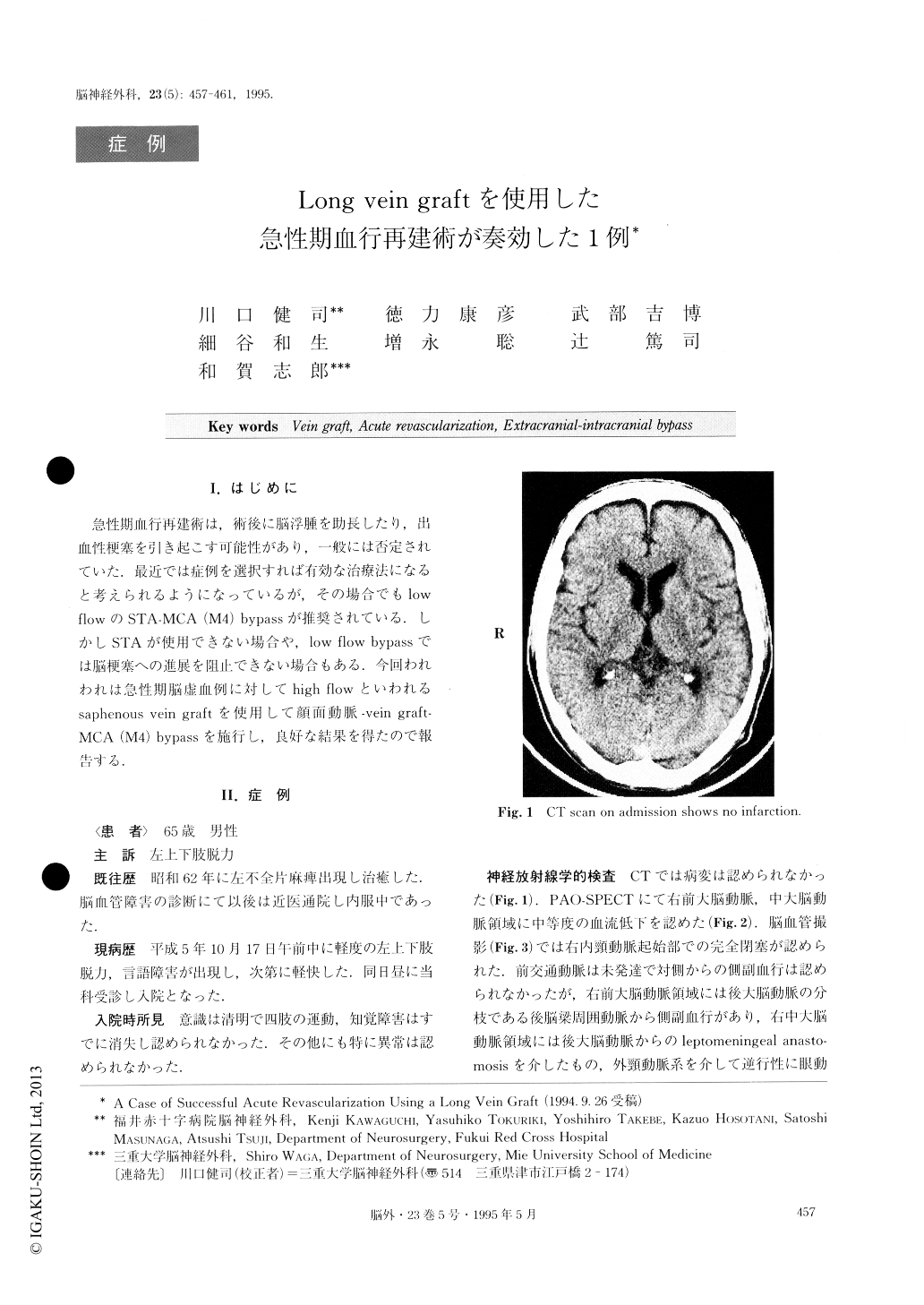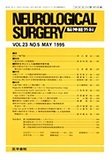Japanese
English
- 有料閲覧
- Abstract 文献概要
- 1ページ目 Look Inside
I.はじめに
急性期血行再建術は,術後に脳浮腫を助長したり,出血性梗塞を引き起こす可能性があり,一般には否定されていた.最近では症例を選択すれば有効な治療法になると考えられるようになっているが,その場合でもlow flowのSTA-MCA(M4)bypassが推奨されている.しかしSTAが使用できない場合や,low flow bypassでは脳梗塞への進展を阻止できない場合もある.今回われわれは急性期脳虚血例に対してhigh flowといわれるsaphenous vein graftを使用して顔面動脈—vein graft—MCA(M4)bypassを施行し,良好な結果を得たので報告する.
We experienced a case of successful acute revascular-ization using a long vein graft.
A 68-year-old man was admitted to our department due to transient ischemic attack of the left hemiparesis. CT scan showed no infarction, but PAO-SPECT re-vealed moderate hypoperfusion in the right ACA and MCA area. Cerebral angiography demonstrated right IC occlusion at its origin and moderate collateral cir-culation via leptomeningeal anastomosis from the PCA area, and via the external carotid system, especially directly from STA. But the STA was very narrow.Three days after admission, left hemiparesis appeared again and deteriorated severely. This time the hemi-paresis persisted. Although MRI demonstrated little in-farction in the right frontal lobe, we decided to carry out revascularization on the same day. Right saphenous vein was harvested for a graft because of the narrowSTA. The facial artery and angular artery was selected as a donor and a recipient respectively, to avoid a clamp of the EC and a craniotomy of the STA running area. Finally we performed a facial artery-vein graft-angular artery (M4) bypass. The patient showed no complication and the left hemiparesis improved enough to allow the patient to walk by himself.
Revascularization using vein graft is dangerous for acute ischemia due to the possibility of a complication such as brain edema and hemorrhagic infarction. Theusual style of vein graft bypass is an EC-vein graft-M2 or M3 bypass. Using this style, high pressure inside the EC is carried intracranially. In the case described here, the donor was facial artery, and the recipient was M4 segment of the angular artery, so the pressure carried intracranially might be interfered. This is thought to be a reason for the success of the vein graft without hyperperfusion syndrome resulting.

Copyright © 1995, Igaku-Shoin Ltd. All rights reserved.


